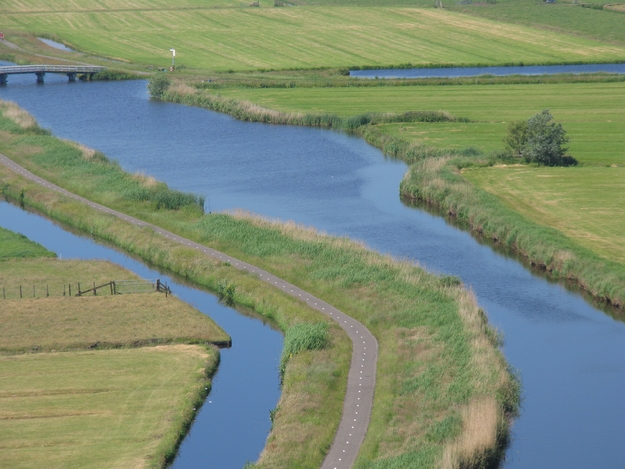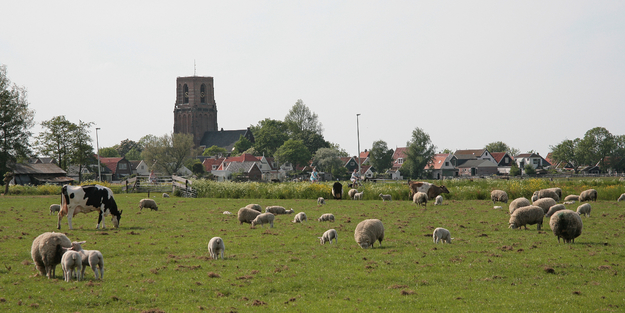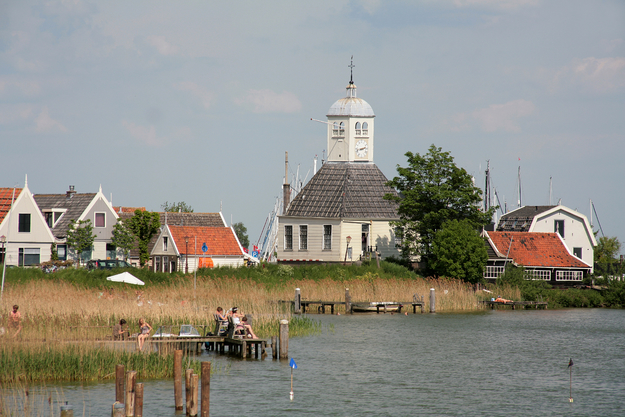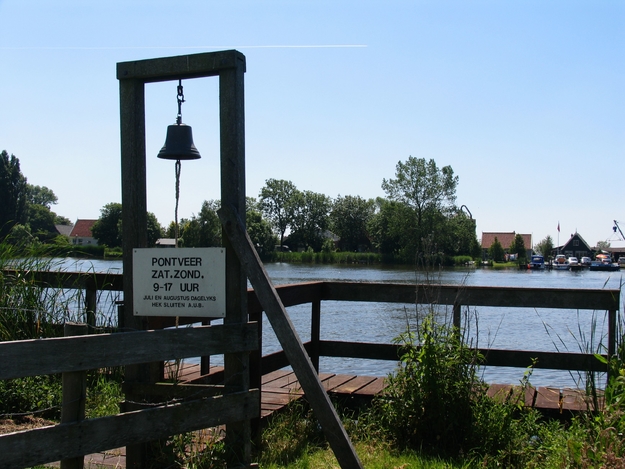1. De Stadshoeve
The bike tour starts at sports center De Weeren/Only Friends, at the overpass on Beemsterstraat, under the A10. At Zunderdorpergouw 29 lies De Stadshoeve, a typical North-Holland bellglass farm from 1861. Currently, the fifth generation of the Hoeve family lives here.
2. Zunderdorp/Achtergouwtje 6-7
On Achtergouwtje 6-7 in Zunderdorp you'll find a farm dating from 1900. The double wooden house and the separate bellglass farm attached on two sides makes this an extraordinary farm in Noord and its surroundings.
3. The Ransdorper Toren
Biking from Zunderdorp on the Nieuwe Gouw, Ransdorp and its remarkable tower soon comes into view. The tower was built around 1540 and was used as a lighthouse for ships on the former Zuiderzee. In July and August, the Ransdorper Toren is open daily (except for Mondays) from 11:00 to 17:00. In April, May, June and September it's open on the weekends from 11:00 to 17:00.
4. Ransdorp/Dorpsweg
In Ransdorp, towards Durgerdam/Schellingwoude on Dorpsweg 115, you'll see the first national monument. Since 1740, the same family has been living in this wooden farm. Here you can buy organic dairy products. On number 78 there’s a hay-house farm with a double ‘kaakberg’.
On Dorpsweg 70 you can grab a bite to eat, or have a drink at hotel-cafe De Zwaan, which is more than 100 years old. At the end of Dorpsweg you take a left towards Durgerdam. To your right, on Durgerdammergouw 2, lies the national monument Elders Rust, a glassbell farm from the 19th century. Continue to Durgerdam and enjoy the view with a drink at De Oude Taveerne.
5. Bloemendalergouw in the direction of Holysloot
Biking back over Dorpsweg, take a right at the end towards Holysloot/ Uitdam/ Marken. You are now riding on the Bloemendalergouw. At number 13 lies a well-restored national monument. A little further down the street you will find a bellglass farm (number 42) with a wooden shed from 1910.
6. Holysloot/Dorpsstraat
A long bike path leads to Holysloot. This village is made up of just one street: Dorpsstraat. Right off the village’s only intersection you can eat or drink something at restaurant Het Schooolhuis (built in 1875). Here you'll also find the Tourist Information Point (TIP). At the end of Dorpsstraat (number 2) lies a monumental 17th century farm.
Cycle past the little yacht port off the Holysloter Die and take the bike ferry to the other side, towards Broek in Waterland (daily crossing in July and August from 09:00 to 17:00, from April to July and in September just on the weekends from 09:00 to 17:00).
7. Straight through the fields
After the intersection, the cycle tour continues right through the fields. On your way you'll pass five white pedestrian bridges. The last pedestrian bridge takes you to Poppendammergouw, where you take a right.
8. Volgermeer
If you turn left towards Broek in Waterland, the road dives down into the Belmermeerpolder. This used to be marshland, until storms and floods swept away vast pieces of land. The lake was later impoldered. To the left, behind the dike, lies the Volgermeerpolder. This used to be Amsterdam’s municipal dumping ground during the last century. Since 2003 the city has been decontaminating the area. In the future this will be a water-rich recreational are.
9. Broekergouw
Head back towards Zunderdorp/Amsterdam. The bike path winds its way through the landscape alongside the road to Broek in Waterland and Zunderdorp. On this road you will find a number of historical farms. On number 12 you’ll see a great example of a (former) simple farm from 1916, containing a homestead and a home, a brick cow barn and a hay-house.
10. Zunderdorp
After the hay-house farm on Broekergouw 5 you enter Zunderdorp. To your right on ’t Voorwerf 1 is a glassbell farm that goes by the name of Persepolis. On Nopeind 20 you’ll see a glassbell farm from the beginning of the 20th century. This farm is still used as an agricultural company.
Before you exit Zunderdorp, take a left on the bike path straight through the fields, until you return to the starting point: sports center De Weeren.



